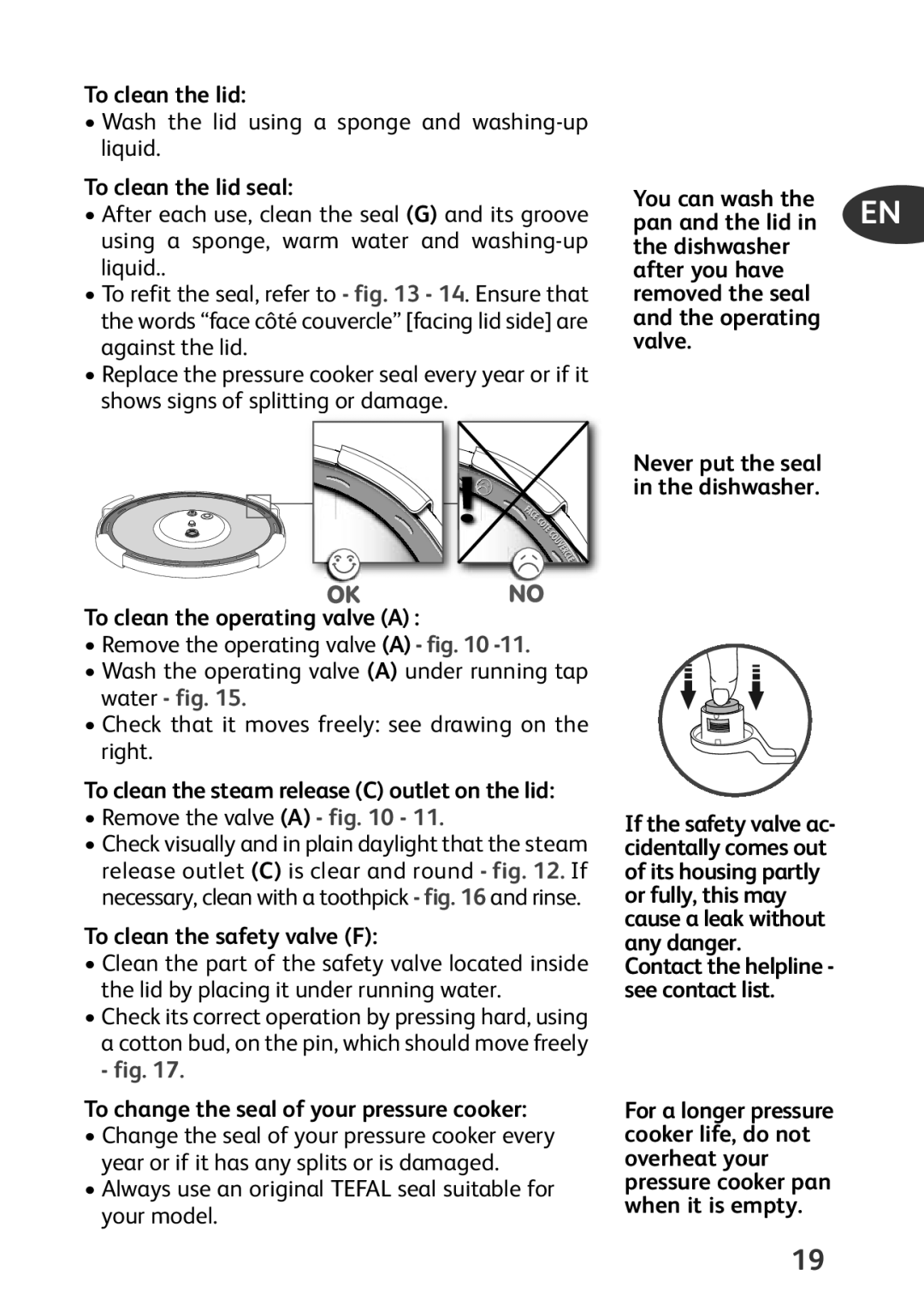
To clean the lid:
•Wash the lid using a sponge and
To clean the lid seal:
•After each use, clean the seal (G) and its groove using a sponge, warm water and
•To refit the seal, refer to - fig. 13 - 14. Ensure that the words “face côté couvercle” [facing lid side] are against the lid.
•Replace the pressure cooker seal every year or if it shows signs of splitting or damage.
To clean the operating valve (A) :
•Remove the operating valve (A) - fig. 10
•Wash the operating valve (A) under running tap water - fig. 15.
•Check that it moves freely: see drawing on the right.
To clean the steam release (C) outlet on the lid:
•Remove the valve (A) - fig. 10 - 11.
•Check visually and in plain daylight that the steam release outlet (C) is clear and round - fig. 12. If necessary, clean with a toothpick - fig. 16 and rinse.
To clean the safety valve (F):
•Clean the part of the safety valve located inside the lid by placing it under running water.
•Check its correct operation by pressing hard, using a cotton bud, on the pin, which should move freely
- fig. 17.
To change the seal of your pressure cooker:
•Change the seal of your pressure cooker every year or if it has any splits or is damaged.
•Always use an original TEFAL seal suitable for your model.
You can wash the
pan and the lid in EN the dishwasher
after you have removed the seal and the operating valve.
Never put the seal in the dishwasher.
If the safety valve ac- cidentally comes out of its housing partly or fully, this may cause a leak without any danger.
Contact the helpline - see contact list.
For a longer pressure cooker life, do not overheat your pressure cooker pan when it is empty.
19
